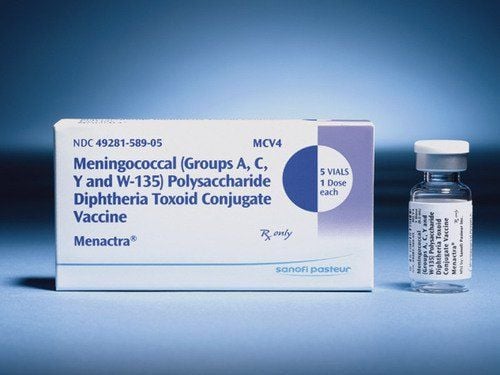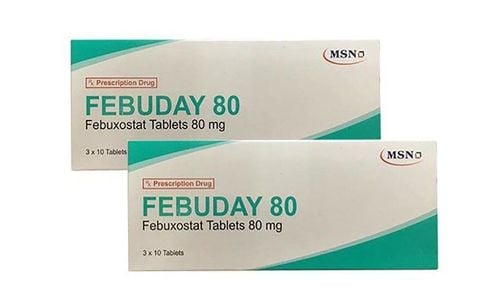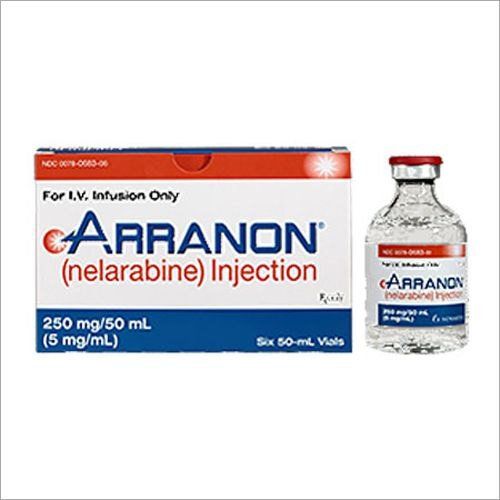This is an automatically translated article.
Milurit is a medicine used to treat hyperuricemia and gout. In each Milurit 300mg tablet, in addition to the main ingredient, allopurinol 300mg, Milurit medicine also contains excipients such as microcrystalline cellulose, gelatin, sodium starch glycolate, magnesium stearate, colloidal anhydrous silica,... to help ensure volume and solubility. , the stability of a Milurit tablet.
1. What does Milurit do?
With the main ingredient is allopurinol, Milurit medicine is often indicated in the following specific cases:
Patients with gout, primary hyperuricemia, secondary hyperuricemia, secondary hyperuricemia accompanied by blood diseases. For the prevention and treatment of patients with uric acid nephropathy, hyperuricemia associated with increased cell loss due to radiation and/or chemotherapy, lymphoma, leukemia, uric acid stones and stones calcium oxalate accompanies uric aciduria and other malignancies. In addition, the drug Milurit is also indicated in some other cases when prescribed by a doctor.
Milurit should not be used in the following cases:
Patients with a history of allergy or hypersensitivity to any of the ingredients in Milurit. Patients with severe liver disease. Patients with severe renal failure, uremia, pregnant and lactating women. Patients with idiopathic histiocytosis (even if only in family history) Do not initiate allopurinol in patients with an acute gout attack.
2. Dosage and usage of the drug Milurit
Milurit is used as prescribed by the doctor. The best time to use Milurit is after a meal, taking it with plenty of water. You can refer to the dosage of Milurit as follows:
2.1. Dosage of Milurit in Adults The recommended starting dose is 150 mg/day. If necessary, the daily dose may be increased in increments of 150 mg increments until the desired effect is achieved, monitoring serum uric acid every 1 to 3 weeks. Maintenance dose is usually 300-600 mg/day. If necessary, the dose can be increased to 900 mg/day. When the daily dose of Milurit exceeds 300mg/day, it should be divided into 2-4 equal doses. Dosage of Milurit by weight: 2 - 10 mg/kg body weight/day Use in oncological diseases: Start taking Milurit 1 - 2 days before anti-tumor therapy. Then take a dose of 600mg/day for 2-3 days and use a maintenance dose in the following days based on the serum uric acid concentration. 2.2. Dosage of Milurit in children In the treatment of secondary hyperuricemia associated with blood malignancies or other neoplasms and in some enzyme disorders, the usual dose of Milurit is 10-20mg. / kg body weight / day depending on the size of the tumor, the number of peripheral embryos or the degree of bone marrow infiltration.
2.3. Dosage of Milurit drug in elderly patients, kidney failure, liver failure Use Milurit drug at the lowest dose but still achieve the highest efficiency, monitor liver and kidney function. To reduce the toxicity of Milurit, the dose should be reduced depending on the degree of liver and kidney failure.
The recommended dose for use of Milurit in patients with renal impairment with a clearance of less than 20 ml/min is not to exceed 150 mg/day. A 150 mg dose of Milurit may also be considered with a longer interval between doses than 1 day. Monitor allopurinol plasma concentrations, allopurinol plasma concentrations should not exceed 15.2 mg/L.
3. Side effects of the drug Milurit
Milurit may cause undesirable effects including:
Increase in alkaline phosphatase levels, increase in serum transaminases, thrombocytopenia, non-regenerative anemia, agranulocytosis. Hepatitis , epileptic seizures. Itching, papule rash, urticaria, skin peeling. Nausea, vomiting, abdominal pain, diarrhea, headache, drowsiness, fatigue, dizziness. Initiation of treatment with Milurit may cause an acute attack of gout.
4. Precautions while using Milurit
One of the undesirable effects of the drug Milurit is making the patient drowsy, dizzy, tired, and reduce the ability to concentrate. Therefore, after taking Milurit, it is necessary to avoid jobs such as driving, operating machinery and doing things that require alertness. Currently, there are no data to show that Milurit can cause abnormalities in the fetus. However, it is necessary to be careful with the use of Milurit for pregnant women, only use it when absolutely necessary, the benefits outweigh the risks and with the indication and monitoring of the doctor. Milurit can be passed to a baby through breastfeeding. It is best not to or limit the use of Milurit during breast-feeding.
5. Drug interactions
Milurit may interact with the following drugs:
When Milurit is used with drugs such as azathioprine or 6-mercaptopurine, Milurit increases the toxicity of these drugs by inhibiting the metabolism of azathioprine drugs, 6-mercaptopurine, so the dose of azathioprine, 6-mercaptopurine must be reduced to 1⁄4 - 1⁄3 of the normal dose. When Milurit is used together with adenine arabinoside (vidarabin) because it increases the half-life of adenine arabinoside. When using Milurit with cytostatic drugs such as cyclophosphamide, bleomycin, doxorubixine, mechloroethamine: increases the risk of harmful effects on hematopoiesis. When co-administered with chlorpropamide: increased risk of persistent hypoglycaemia with impaired renal function. When using Milurit with drugs that increase uric acid in urine, probenecid, sulfinpyrazone, salicylate at high doses: reduce the effect of Milurit drug. Allopurinol inhibits the metabolism of theophylline, aminophylin drugs. When using Milurit together with cyclosporin: increase the toxicity of cyclosporin. Increased risk of skin reactions when using Milurit with antibiotics such as ampicillin, amoxicillin. When using Milurit with coumarin derivatives: increased risk of anticoagulant.
Please dial HOTLINE for more information or register for an appointment HERE. Download MyVinmec app to make appointments faster and to manage your bookings easily.













